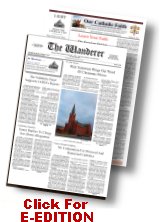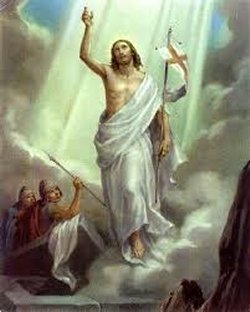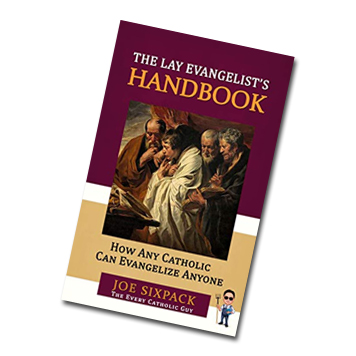Poetic Insight
By JUDE P. DOUGHERTY
“Poet — lawyer — planter, and former soldier” is the description Walker Percy gives to his uncle, William Alexander Percy, the author of Lanterns on the Levee, reprinted by the Louisiana State University Press in 2011, from a 1973 edition. William Percy’s book is worth revisiting not simply for its observations and down-home wisdom, but because it attests once again to the value of poetic witness from antiquity to the present. What would life be like without Homer, Dante, Shakespeare, Browning, and T.S. Eliot?
Poetic witness comes in degrees of veracity but in its depths it is revelatory in ways that eludes the pedestrian prose of historians, biographers, and philosophers. Like the metaphysician, the poet’s object is being, the existent, but the existent in its universality. Thus the ancient Greek poets from Aeschylus on can tell us much about nature and human nature as we identify truth in their time transcending perspective.
In rereading William Percy one may recall the technique of Theognis of Megara, who in his portrayal of aristocratic life in archaic Greece depicted that life, warts and all, displaying its flaws as well as its virtues. William Percy does the same for a period of American life that begs to be understood.
This is not to say that in reading poets we should leave our critical faculties behind. Plato taught us to be wary of poets for the damage they can inflict on the impressionable. Aristotle, on the other hand, divorced poetry from larger matters of morality, politics, and philosophical standards of truth. And yet he thought that poetry in some sense should rise above mundane life and elevate the human spirit. The poetic plot, he held, should show no trace of the unintelligible or irrational. Still poetry, from his perspective, should not be subjected to simple and direct evaluation.
Following the outline of his doctrine in the Poetics, it may be helpful to approach the truth value of poetry from an ontological perspective. Jacques Maritain in Art and Scholasticism says flatly, “Poetry is ontology.”
In his introduction to Lanterns on the Levee, Walker Percy relates the awesomeness he felt as teenager growing up in the house of a poet, a decorated infantry officer home from the Great War. “The fact that he was also a lawyer and a planter didn’t cut much ice — after all, the South was full of lawyer-planters. But how many people did you know who were war heroes and wrote books of poetry? One had heard of Rupert Brooke and Joyce Kilmer, but they were dead.” Clearly, Walker Percy’s own prophetic voice, expressed in nearly all of his fiction, finds its roots in his early education in the home of the poet, his Uncle Will.
If this essay has a thesis, it is an affirmation of the close relationship between metaphysics and artistic production. As Aristotle put it: “The distinction between historian and poet is not the one writing prose and the other verse; it consists in this that the one describes the thing that has been, the other the kind of thing that might be. Hence poetry is something more philosophic and of graver import than history since its statements are of the nature of universals whereas those of history are singular.” One could put Herodotus into verse but it would still be a species of history.
One will not find in Aristotle’s Poetics a fully developed theory of art. Aristotle, reviewing the poetic forms he has known, will speak to what it is the poet should aim at, of what is to be sought and what is to be avoided in constructing plots. He has much to say about the forms of tragedy, the uses of fear and pity in the construction of a plot, but his emphasis is always on the universal aspect of the narrative. “By a universal statement I mean one as to what such and such a kind of man will probably or necessarily say or do — which is the proper aim of poetry — though it affixes proper names to the characters,” he says in the Poetics.
One does not have to be of advanced age to appreciate some of the memorable lines T.S. Eliot assigns to Prufrock in The Love Song of J. Alfred Prufrock, “Do I dare — descend the stair with a bald spot in the middle of my hair” or understand his lament, “I have seen the moment of my greatness flicker, and I have seen the eternal Footman hold my coat and snicker.” Those lines speak to the universal character of human nature.
With Aristotle, two things to note here, respect for the natural order and its telos and respect for the elevating aim of poetry. Shakespeare, in his own day, will pay homage to this inherited theme. The poet/playwright in Hamlet (Act 3, Scene 2) is cautioned not to overstep the modesty of nature, “for anything overdone is from the purpose of playing, whose end both at first and now, was and is, to hold us t’were the mirror up to nature, to show virtue her own feature, scorn her own image, and every age and body of time his form and presence.” What is said of poetry is analogously applicable to other forms of fine art.
The close relationship between metaphysics and artistic production has been noted since antiquity. Umberto Eco in his Art and Beauty in the Middle Ages provides, from a historical point of view, a succinct statement of the dependency. “Medieval aesthetics began with a heritage received more or less uncritically from the Classical age, a heritage infused, all the same, by a spirit altogether new. Gradually there developed a metaphysics and epistemology of the beautiful and eventually an idea of beauty as an organic value. This was the period of its greatest maturity.”
When, in the aftermath of the Enlightenment, Aristotelian metaphysics began to lose its following, the rationale of art and poetry became less and less systematic. The foundation was laid for the Mannerist doctrine of genius and imagination. When the artifact conceived as essentially a matter of order, a rendering of the splendor formae in the language of Aquinas, was lost, so too was lost the notion that artistic production has something to do with beauty. This loss is reflected in the very architecture of museums that came to be or were altered in the last half of the twentieth century.
The late nineteenth and early twentieth centuries witnessed the creation of the great museums of art that today span the United States from New England to the West Coast. Private collections amassed by industrial leaders were offered for public appreciation in structures deemed appropriate for their viewing. Kress, Carnegie, Mellon, Frick, and Clark are names associated with some of the greatest collections of European masters.
The favored architecture of the newly endowed museums tended to be neoclassical Greek, with a few museums opting for the Italian Renaissance style. Museum-goers were no doubt unconsciously led to identify the art museum with expansive stairs leading to massive portals fronted by Doric or other Greek-inspired columns that blended into the building as a whole. A stranger arriving in the city would instinctively identify such a structure as an art museum.
The interior matched the promise of the building’s façade, expansive corridors, elegant staircases, alabaster fountains, Renaissance courtyards, a delight to the eye promoting a feeling of grandeur. Upon entering the usually paneled, picture galleries, one could view European masters from the early Italian Renaissance to the French Impressionists. Sculpture gardens and specialized collections of primitive American painting or oriental art might be found off one of the many corridors.
Collections were usually arranged chronologically unless the donor had mandated that his collection be displayed intact. Viewers were exposed to Botticelli, Raphael, Memling, Van Eyck, Rembrandt, El Greco, Van Gogh, Ingres, David, Corot, Manet, Renoir, and countless others from the thirteenth to the twentieth century.
Then something happened. As collections expanded, new spaces for viewing had to be added, but the art world of the late twentieth century was not that of the late nineteenth. Almost without exception the architecture of the new space deviated substantially from and often clashed with that of the original gallery. Rarely did the expansion reflect the beauty and grace of the original structure. The curve gave way to the straight line, adornment to the slab, and glass replaced marble and stone.
One may say that the newly acquired paintings deserved no better. Bizarre architecture seemed suited to bizarre content. Ideological and fanciful organization replaced the chronological. New “isms” took hold: Fauvism substituted arbitrary colors for those of nature on the assumption that there is no reason esthetically for the sky to be blue or the grass to be green. Cubism flattened images and abolished depth. Kandinsky went even further, abolishing all traces of subject matter. Surrealism and Futurism became favorites of the new intelligentsia.
Museums often took upon themselves a pedagogical role and became classrooms in defense of the irrational. Curators apparently did not notice that patrons moved quickly through the new galleries, failing to linger as they might before the European masters. The movement to the irrational was no doubt encouraged, if not inspired by, the taste of Joseph Hirschhorn and Peggy and Solomon Guggenheim. Their fortunes enabled them to build independent museums to house their own collections, but their influence extended far beyond. The sea change in the art world tended to reflect the ideological shift of the patrons.
The Wall Street fortunes that supported the new were those of financiers and stock manipulators, a different breed from the industrialists of the previous century. The influence of the academy could be detected in the narrative that often accompanied the exposition of the new. Viewers who could spontaneously appreciate a Raphael, a Rembrandt, or a Renoir had to be coached into an appreciation of a Duchamp, a Pollock, or a de Kooning.
In the absence of beauty the viewer had to be told what the artist was trying to do, that the dripping of pigments in swirling rhythms or the allowing of paint to run untended down the surface of a canvas, did indeed have some meaning. The explanation? Perhaps the artist wished to “stress the risk and unpredictability of life itself.”
Clearly, the academic philosophies of the Enlightenment, Anglo-French and German, had penetrated the art world. A Christian past had given way to an atheistic, materialistic modernism. To use the words of George Santayana, “The shell of Christendom was broken.” With its loss went a respect for classical antiquity and a respect for natural forms theretofore regarded as the handiwork of God.
No longer was there a perceived purpose in nature or a moral order to be observed. The artist was emancipated from all restraint, free to express himself as he saw fit. Spontaneity and indecision were the order of the day. Incomprehensible daubings replaced lovely landscapes, still-lifes, and portraits. In their drive to create a new world of forms unrelated to the physical world in which we live, some commercially successful artists seem to take a diabolical pleasure in baffling the public.
Every moviegoer of the past half-century will recognize the motto of a major motion picture studio, “Ars gratia artis.” The meaning and implications of that dictum may be debated, but it points to the fact that theories of art matter.
Taking his lead from Albertus Magnus, St. Thomas, in discussing the nature of aesthetic experience, identifies three characteristics of the beautiful: integrity, harmony, and clarity or splendor of form (splendor intellectus). Just as truth satisfies the intellect and good satisfies the will, beauty satisfies both cognitive and appetitive faculties, that is, it satisfies both intellect and will.
Aquinas further describes beauty as resplendence of the substantial form in an object whose parts are well proportioned. From a Thomistic point of view “resplendence” is an objective quality, an ontological quality, one that exists independently of the viewer. The nobility of the form instantiated reflects the nobility of the form as conceived and may tell us something at a deeper level about the integrity of the artist himself. What may seem inspired is often the product of days of thought.
Anyone who has had the opportunity to discuss the work of a painter or sculptor with the artist himself will recognize how much of the artist is transferred to the artwork itself. The intellectual and spiritual formation of the artist guides his hand even where intractable matter has not yielded to the form as conceived in the mind of the artist.
It is clear that much of the contemporary art world has rejected the notion that beauty is or should be the aim of artistic production. Blatant ideology and commercial success have robbed much contemporary art of integrity as well as splendor. Ideology can subvert artistic production when it is made to serve ends that are not its own, for example, the proletarian art of the Roosevelt and Stalinist periods. This is not to say that art necessarily loses its integrity when it assumes a pedagogical function. The didactic art of the early decades of the twentieth century insofar as it was designed to serve a socialist agenda may leave us unmoved because of its dehumanizing message. Art deco of the same period, like commercial art everywhere, may fail for other reasons.
The Divine Creative Act
Art in the service of the temple is a different matter. The architecture, statuary, stained glass, and painting of a medieval cathedral succeeded in creating an ambience that led the viewer to a transcendent and ennobling order. Paintings and sculpture may be weak forms of communication compared with the printed word, but when presented and understood within the context of the theology that informed their creation, they can be overwhelming in their effect. In the service of the temple, the artist’s vision is received by a like mind, his meditation understood. The viewer is drawn not just to the sensory qualities of the object but to the immanent qualities of the whole. Nobility of purpose does not, of course, redeem a badly executed work.
Of twentieth-century artists whose work illustrates the relationship of art to faith, one may be drawn to the stained glass of Chagall, to the paintings of Rouault, or to the massive sculptures of Ivan Mestrovic. The piety of Mestrovic is exemplified by his magnificent St. Jerome, currently found in front of the Croatian Embassy on Massachusetts Avenue in Washington, D.C. Like Jerome, Mestrovic has his roots in the Dalmatian coast and his faith in the very Scriptures that Jerome rendered into Latin.
Religious subjects themselves do not make a work of art religious. From a Christian perspective, we live in a created universe where everything that exists is religious because it imitates God in its operations as well as its being. In a finite and analogical way, the artist participates in the divine creative act. In a Christian universe the artist is called to praise God by cooperating with His creative power, by increasing, to the extent that he can do so, the sum total of being and beauty in the world. To make things and to make them beautiful are one and the same thing.
This calling is exemplified at the highest level when the work is destined for the temple. Thus understood, creative art is not limited to imitation but encompasses the creation of new forms. Yet what is created cannot help but reflect the personal imprint of the artist, the vision and harmony, or lack thereof, found within the depths of his soul.
Loss Of Faith
It seems evident that in the contemporary art world, be it architecture, painting, or sculpture, little is taken from nature, or referred even implicitly to an order in nature. Absent the recognition of an ordered universe, freedom seems to be exercised in the name of freedom itself.
Reed Hamilton Armstrong, arguably the foremost active sculptor in North America, has executed a statue of Ibn Gabirol that graces a public square in Málaga, but it is neither Armstrong nor Ibn Gabirol that is likely to be identified with that city. Within the art world, Málaga is best known as the birthplace of Picasso. Like Armstrong, Picasso was baptized in the Catholic faith, and, like Armstrong, his early training made him an able draftsman. Picasso’s Altar Boy is a pleasing illustration of both his faith and skill, but at the age of nineteen, Picasso left home for the bohemian life of Paris.
The experience was formative in more ways than one. The personal and artistic freedom he found there led both to his loss of faith and to a rejection of the artistic tradition of the academy. The modern anarchism of Paris had claimed another adherent, leading his artist father, Don José Ruiz y Blasco, to decry “a shameful waste of talent.” Picasso’s art was to become agonized and shrill. His canvasses transformed everyday subjects into bizarre images in which he took almost perverse liberties with human anatomy. Enlisted in the cause of International Communism, many of his works became grotesque symbols of brutality and darkness.
From a commercial point of view, Picasso has to be considered the most successful artist of the twentieth century. Museum directors, art dealers, and wealthy connoisseurs vied for his work. His paintings sold for the largest sums ever paid to a living artist. That success may also attest to a radical change in the intellectual, one could say, spiritual, climate of the century. One need not compare a Mestrovic to a Picasso to illustrate that change. It is exemplified in the life work of Picasso himself. One can delight in his early work while eschewing his irrational later work. The correlation between loss of faith and loss of perspective is a subject not often addressed by art historians.
By way of a conclusion, I am drawn to an insightful passage written more than a hundred years ago by Leo N. Tolstoy: “Christian art should be catholic in the original meaning of the word, i.e., universal, and therefore it should unite all men. And only two kinds of feeling do unite all men: first, feelings flowing from the perception of our sonship to God and the brotherhood of man; and, next, the simple feelings of common life, accessible to everyone without exception — such as the feeling of merriment, of pity, of cheerfulness, of tranquility, etc. Only these two kinds of feelings [can supply subject matter for great art].”











